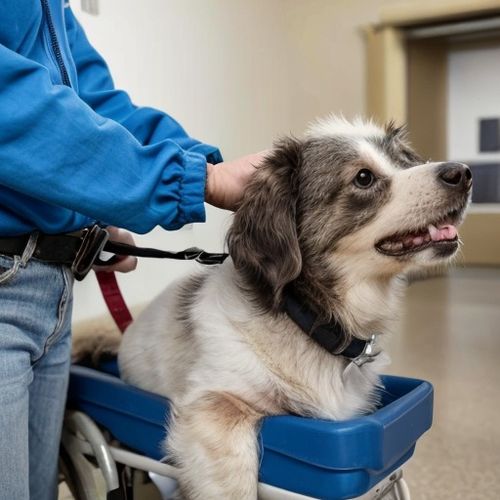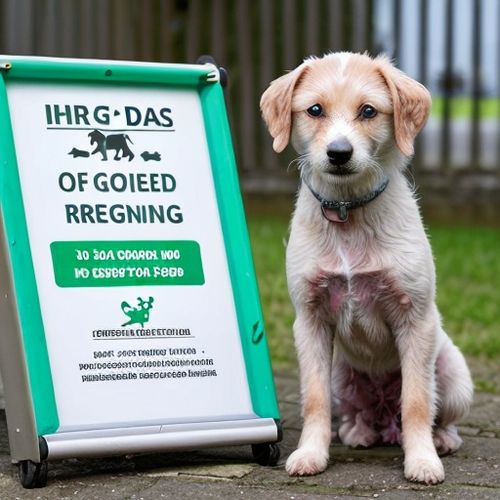The process of microchipping dogs in the UK is a legal requirement that ensures responsible pet ownership and aids in the recovery of lost animals. Since 2016, it has been mandatory for all dogs over eight weeks old to be microchipped and registered on an approved database. This system not only helps reunite pets with their owners but also plays a crucial role in reducing the number of stray dogs across the country.
Understanding the Microchipping Procedure
The microchipping process itself is quick and relatively painless for the dog. A qualified professional, such as a veterinarian or trained implanter, inserts a tiny microchip—about the size of a grain of rice—under the dog's skin, usually between the shoulder blades. This chip contains a unique 15-digit number that can be read by a scanner. Unlike GPS trackers, these passive chips don't require power and last for the dog's lifetime, though regular checks are recommended to ensure they haven't migrated or stopped functioning.
Choosing an Approved Database is a critical step in the registration process. The UK government recognizes several databases where the chip details must be registered. These include Petlog, Identibase, and Animal Tracker among others. Each database operates slightly differently, but all must meet specific government standards for data protection and accessibility. Owners should research which database best suits their needs, considering factors like cost, additional services, and ease of updating information.
The registration details typically include the owner's contact information, the dog's description, and the microchip number. It's vital that this information remains current; failing to update details when moving house or changing phone numbers could render the microchip useless. Some databases charge fees for updating information after an initial period, while others offer lifetime registration included in the initial fee. Many veterinary practices assist owners with the registration process during the microchipping appointment.
Legal Requirements and Enforcement
UK law clearly states that all dogs must be microchipped by eight weeks of age, and breeders are responsible for ensuring this happens before puppies go to their new homes. The only exceptions are dogs with a health condition certified by a veterinarian that makes microchipping inadvisable. Local authorities have the power to issue notices to owners of dogs found without microchips, giving them 21 days to comply. Failure to do so may result in a £500 fine.
Police and local authority dog wardens routinely scan stray dogs for microchips as their first step in reuniting them with owners. The system has proven remarkably effective, with thousands of dogs returned home each year who might otherwise have ended up in shelters. This not only benefits individual owners but also reduces the burden on animal welfare organizations and public resources.
Transferring Ownership and Updating Details represents one of the most common scenarios where microchip records need attention. When a dog changes hands, both the previous and new owners must notify the database to ensure proper transfer of ownership. This process helps maintain an accurate audit trail and ensures responsibility for the dog is clearly established. Many databases provide online portals to make these updates straightforward, though some still require written confirmation for ownership transfers.
International travel introduces additional considerations. The Pet Travel Scheme (PETS) requires microchipping as part of the process for dogs entering or leaving the UK. The chip must comply with ISO standards (ISO 11784 and 11785) to ensure it can be read by scanners in other countries. Owners planning to travel abroad with their pets should verify their microchip meets these specifications well in advance of their trip.
The Importance of Regular Checks
While microchips are designed to last a lifetime, experts recommend having them checked during routine veterinary visits. Chips can occasionally migrate from their original implantation site or, very rarely, stop functioning. A quick scan verifies the chip is still readable and in the expected location. Most veterinary practices will perform this check free of charge as part of a regular examination.
The system isn't without its critics. Some animal welfare advocates argue that the legislation doesn't go far enough, as it doesn't require annual registration renewals or include cats. Others point out that without proper enforcement and public education, the system's effectiveness is limited. Nevertheless, the microchipping law represents a significant step forward in animal welfare and responsible pet ownership in the UK.
For prospective dog owners, understanding the microchipping and registration process forms an essential part of preparation. The small investment of time and money pays dividends in peace of mind, knowing that should the worst happen and a dog go missing, the chances of a happy reunion are significantly increased. As technology advances, some databases are beginning to offer additional features like online pet profiles and lost pet alerts, further enhancing the system's value to UK dog owners.

By Sarah Davis/Apr 14, 2025

By James Moore/Apr 14, 2025

By Victoria Gonzalez/Apr 14, 2025

By Christopher Harris/Apr 14, 2025

By Megan Clark/Apr 14, 2025

By Benjamin Evans/Apr 14, 2025

By Emily Johnson/Apr 14, 2025

By Laura Wilson/Apr 14, 2025

By Victoria Gonzalez/Apr 14, 2025

By John Smith/Apr 14, 2025

By Jessica Lee/Apr 14, 2025

By Noah Bell/Apr 14, 2025

By John Smith/Apr 14, 2025

By Benjamin Evans/Apr 14, 2025

By Ryan Martin/Apr 14, 2025

By Megan Clark/Apr 14, 2025

By John Smith/Apr 14, 2025

By Natalie Campbell/Apr 14, 2025

By Noah Bell/Apr 14, 2025

By Lily Simpson/Apr 14, 2025